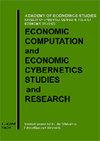The Sequential-Investment Strategy vs. The Single-Investment Strategy: Lessons from Korean Firms' FDIs to China
IF 1
4区 经济学
Q3 ECONOMICS
Economic Computation and Economic Cybernetics Studies and Research
Pub Date : 2023-06-21
DOI:10.24818/18423264/57.2.23.09
引用次数: 0
Abstract
. The paper focuses on an eye-catching FDI pattern prevailing among Korean firms, so-called sequential FDIs. Between a single-investment strategy and a sequential-investment strategy, we scrutinise the reasons why the sequential-investment strategy is pursued by Korean parents taking time value into consideration. Fundamentally, Korean parents are inclined to establish Chinese subsidiaries sequentially because they can enjoy more flexible production effects, which enable them to lead markets in quantity competition. Three important theoretic predictions are drawn from a quantity competition model. First, the net discount payoff under the sequential-investment strategy is payoff dominant to the single-investment strategy’s as long as the market bargaining power of Korean parents can be enhanced. Second, those parents withholding higher discount factors are more likely to pursue the sequential-investment strategy. Third, the longer the Korean parents can stay in China, the more likely that they are to invest sequentially. Pooling LSDV (least squares dummy variable) regressions support these theoretic predictions. It is evident that sequential investments significantly increase the Korean parents’ production capabilities because the production portfolios constructed by the sequential investment strategy can organise internal production networks. As more subsidiaries are networked, the longer the new subsidiaries established by follow-up investments can be sustained owing to tie-in effects. The duration since after the first subsidiary foundation is positively associated with the frequency of sequential investments. It is evident that Korean firms’ sequential investment strategy, combined with their geographical proximity to China, contributes to overcoming market uncertainty and foreignness in China.顺序投资战略与单一投资战略:韩国企业对华直接投资的经验教训
本文关注的是韩国企业中流行的一种引人注目的外国直接投资模式,即所谓的顺序外国直接投资。在单一投资策略和顺序投资策略之间,我们仔细研究了韩国父母在考虑时间价值的情况下采用顺序投资策略的原因。从根本上讲,韩国父母倾向于按顺序设立中国子公司,因为他们可以享受更灵活的生产效果,这使他们能够在数量竞争中领先市场。从数量竞争模型中得出了三个重要的理论预测。首先,只要韩国父母的市场议价能力能够增强,顺序投资策略下的净折扣收益就比单一投资策略下占主导地位。其次,那些隐瞒较高贴现率的父母更有可能采取顺序投资策略。第三,韩国父母在中国停留的时间越长,他们就越有可能按顺序投资。最小二乘伪变量回归支持这些理论预测。很明显,顺序投资显著提高了韩国父母的生产能力,因为顺序投资策略构建的生产组合可以组织内部生产网络。随着越来越多的子公司联网,后续投资建立的新子公司由于搭售效应可以持续的时间就越长。第一个子公司成立后的持续时间与顺序投资的频率呈正相关。很明显,韩国企业的顺序投资策略,加上它们与中国的地理位置接近,有助于克服中国市场的不确定性和外国性。
本文章由计算机程序翻译,如有差异,请以英文原文为准。
求助全文
约1分钟内获得全文
求助全文
来源期刊

Economic Computation and Economic Cybernetics Studies and Research
MATHEMATICS, INTERDISCIPLINARY APPLICATIONS-
CiteScore
1.80
自引率
22.20%
发文量
60
审稿时长
>12 weeks
期刊介绍:
ECECSR is a refereed journal dedicated to publication of original articles in the fields of economic mathematical modeling, operations research, microeconomics, macroeconomics, mathematical programming, statistical analysis, game theory, artificial intelligence, and other topics from theoretical development to research on applied economic problems.
Published by the Academy of Economic Studies in Bucharest, it is the leading journal in the field of economic modeling from Romania.
 求助内容:
求助内容: 应助结果提醒方式:
应助结果提醒方式:


